The relationship between W.B. Years and Sligo stretched back generations and can be discovered through the life of his father, John Butler Yeats
Yeats always maintained that Sligo was the domain and landscape of his poetic imagination. The influence that the people and places of Sligo had on the poet may never be understated, for they sowed in that sensitive and creative mind the seeds of the muse that was to sustain his poetic endeavor for the remainder of his life. It was there that the young poet was first moved to explore the mysteries of the Celtic Sagas and was inspired and excited by the riches contained within the folklore and tales that were related to him by the people of Sligo.
Though the substance and subject matter of Yeats’s poetry and other writings were to explore other landscapes, both real and imaginary, Sligo would remain with him throughout his life and in his final poems re-emerge as the spindle in the wheel of his creative and emotional existence as it turned full circle.
The Sligo connection was not only on his mother, Susan’s side. On completing his studies at Dublin University, W.B. Yeats’s paternal great-grandfather, John Yeats, took orders in the Church of Ireland, and in 1805, he was sent to the parish of Drumcliff in Sligo, where he remained until his death in 1846. The narrow three-storied rectory he occupied still stands close to Drumcliff Church and the round tower and cross. The family connection and his desire to be forever in the shadow of Ben Bulben would lead W.B. Yeats to request that Drumcliff be his final resting place too.
Parson Yeats, according to T. O’Rorke’s History of Sligo, was a fine scholar; he fished, kept horses and enjoyed convivial company. Indeed, when he died, he left an outstanding wine bill of the then substantial sum of four hundred pounds for his heirs to pay. He was also a very popular man and highly regarded locally, not only by those of his own religious persuasion. It is said that once, after having been away in Dublin for a protracted period, bonfires that were lit on the orders of the local Catholic priest blazed all over the county in honor of his return.
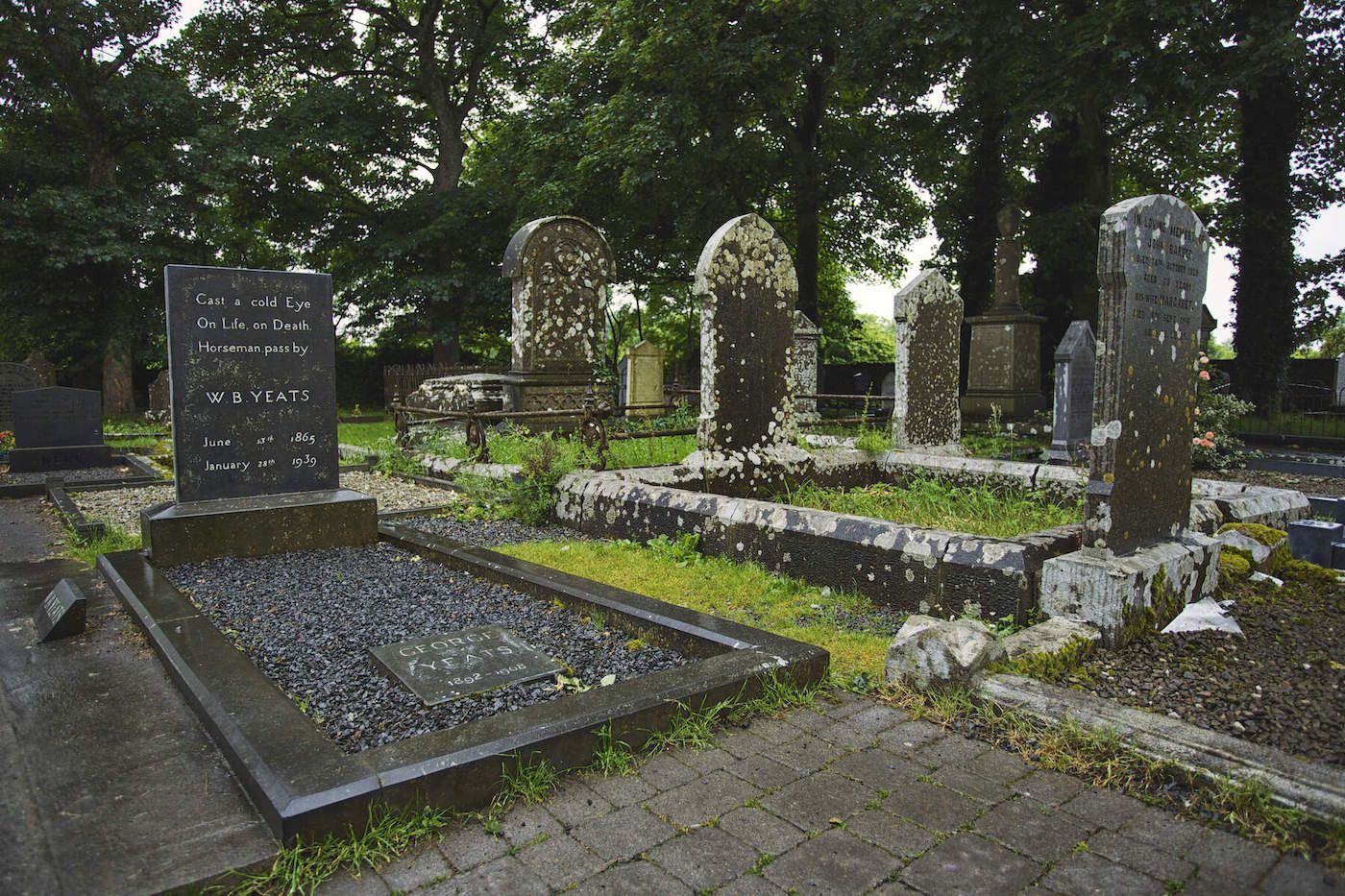
W. B Yeat's Grave at Drumcliffe Church.
John Yeats reared a large and academically illustrious family. One son, Thomas, was considered a mathematician of the highest order. The poet’s grandfather, William Butler Yeats (a recurring name in the family tree), was educated at Trinity College, Dublin, and was both a notable scholar and a sportsman. In the family tradition, he left college and entered the church, becoming a curate in the parish of Moira, Co. Down.
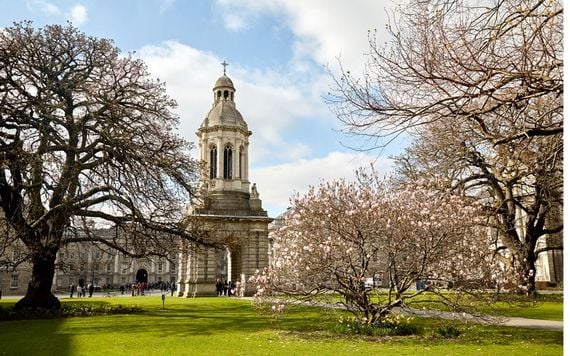
Trinity College, Dublin.
He married Jane Corbet of Sandymount in 1836 and was then appointed Rector of the parish of Tullylish near Portadown. His wife gave birth to the poet’s father, John Butler Yeats, in 1839. JBY was sent to school at the Atholl Academy in the Isle of Man and it was here that he met George Pollexfen, the son of a shipping magnate and mill owner from Sligo. JBY was later to write in his letters that he was ‘intrigued by the slow and tedious’ George, who was at once dull enough to freeze conversation and, at the same time, capable of making up long, imaginative stories that would amuse his schoolmates.
Family tradition presumed that John Butler Yeats would become a clergyman. However, a lack of curiosity about God and other theological matters led him to realize that perhaps he should pursue another career. He studied classics, metaphysics, and logic at university and later won a prize of ten pounds in political economy. On the strength of this money, he set off to visit his friend George in Sligo.
Read more
On his home soil, George was a much happier man than JBY remembered from their school days. He bubbled with conversation as they walked the coastline around Rosses Point, where the Pollexfens and their close relations, the Middletons, had summer houses. It was during this visit that JBY met George Pollexfen’s sister, Susan, to whom he proposed marriage in the summer of 1862.
She and the Pollexfens were delighted to be marrying into the grand Butlers of Ormonde – this illustrious family lineage could be traced back to the Anglo-Norman invasion in the late twelfth century – and JBY was, at that time, pursuing a career as a barrister, which his in-laws saw as an honorable and secure profession and an acceptable alternative to life as a clergyman, for he had social status and prospects and was destined to inherit land and an income.

Sunset at Rosses Point, in County Sligo.
Their marriage took place on September 10th, 1863, at St. John’s Church in Sligo. Later, in Reveries, Yeats quoted his father as saying, ‘We [the Yeatses] have ideas and no passions, but by marriage with a Pollexfen we have given a tongue to the sea cliffs.’
During the night of June 13, 1865, their first child, William Butler, the poet, was born in Sandymount Avenue, Dublin.
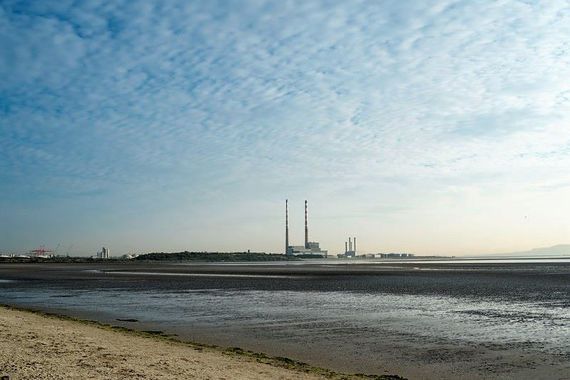
Sandymount Strand in Dublin.
JBY’s legal career was, however, short-lived. In 1867 he finally announced his decision to quit the bar and take up art. He took his family to Sligo to stay with his in-laws until he could find suitable accommodation for them in London, where he would attend art school.
By this time Susan’s parents, William and Elizabeth Pollexfen, had moved their large family from a towered house on Wine Street in Sligo town – which also served as the head office of the Sligo Steam Navigation Company and from whose tower William Pollexfen could observe the comings and goings of his vessels in the quays below – into a large house and estate called Merville. Susan, then aged twenty-six, had eleven siblings. JBY considered the atmosphere at Merville oppressive and worried about the effect it would have on the young Willie. He later wrote that, whereas the Yeatses were a charming, fun-loving, optimistic, and demonstrably affectionate people, the Pollexfens were serious and silent, obsessed with property and position; the two families were the contrast between idealism and cynicism.
Writing to his daughter Lily many years later, JBY said of the Yeatses, ‘You would be proud to have their blood. They were so clever and so innocent. I never knew and never will know any people so W.B. Yeats at age seven, with his uncle Fred Pollexfen and Spot the dog, Sligo, 1872 attractive’ (J.B. Yeats: Letters to His Son W.B. Yeats and Others, 1944). He also wrote that the Pollexfens ‘despised literature and poetry as being part of that idleness which they regarded as so calamitous to morals’ (Prodigal Father, 1978).
JBY lived in the shadow of financial failure for most of his life, and his decision to pursue a career as an artist caused his family great hardship. His views of the Pollexfens might well have been prejudiced by their relative financial success and their disapproval of his career change. Susan Yeats worried about money throughout her life and eventually had four children to care for (two others died in infancy) and a husband who could not sell his paintings. The situation caused unavoidable stress, which no doubt contributed to her suffering a series of strokes that caused her to spend the last 12 years of her life as an invalid. When she died on January 3, 1900, in London, aged fifty-nine, she had not known the happiness she expected when marrying John and was estranged from the people and places she had loved as a girl. She also didn’t live long enough to see the astonishing impact her children would have on the world and the phenomenal impression they would make on literature and art.
Since they could not rely on family finances, the Yeats children had to learn to support themselves, and this they did by various means. Willie wrote and later became a senator. Jack painted and married fellow art student Mary Cottenham White, who came from a well-off family, thus removing himself from impunity at a stroke. Lily embroidered and Lolly became a printer, founding the Dun Emer Press and later the Cuala Press, which produced many fine prints of Jack’s paintings and editions of Willie’s poems. When Lily went to New York in 1907 to attend a trade fair of Irish industrial products, she took her debt-ridden father with her. He refused to return to Ireland and remained there until his death in New York City in February 1922. He is buried at Chester Rural Cemetery in New York State.
An interesting footnote to the relationship between JBY and his in-laws is that once, when the more prosperous W.B. Yeats sent his father a large sum of money for his support in New York, JBY wrote to Lily that though it was like a Yeats to send the money without request and without fuss, it was like the Pollexfens to have had the money to send in the first place.
Extract from "Arise and Go" by Kevin Connolly. Find out more via O'Brien Press.
* Originally published in 2021, updated in May 2025.
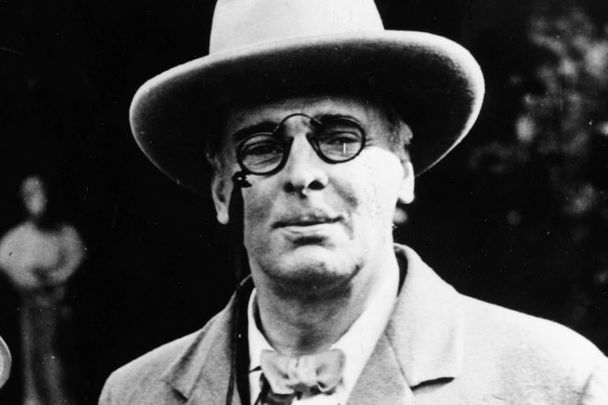


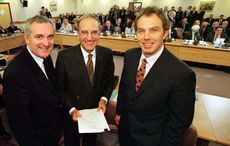
Comments